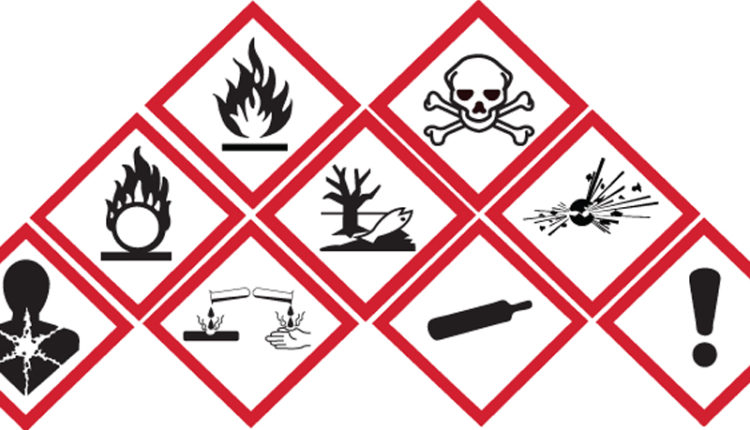– R. R. Nair
“The goal is that the same set of rules for classifying hazards, and same format & content for labels and safety data sheets (SDS) will be adopted and used around the world.”
1.0 INTRODUCTION:
The production and use of chemicals are fundamental factors in the economic development of all countries. The first and most essential step leading to safe use of chemicals is to know their identity, their hazards to health and environment and means to control them. This knowledge should be available in such a way that essential information on the hazards and corresponding protective measures can be identified and conveyed to the user in a form that is easy to understand.
The very purpose of classification and identification of chemicals is to fulfil the need for conveying information on protection against hazards to the user in the most direct manner. The hazard classification and labelling process is an essential tool for establishing an effective information transfer so that the degree of the hazard the chemical represents for man and the environment can be recognised, the correct preventive actions be chosen, and safe use achieved. The International Labour Organisation (ILO) has adopted the Convention No. 170 and Recommendation No. 177 on safety in the use of chemicals at work in 1990. The United Nations recommendations on transport of dangerous goods is widely recognised and used among the UN Member States. Hence, hazard classification systems are included in legalisations enacted by various countries, conveying the safe production, transport, use and disposal of chemicals. These classifications are designed to provide a systematic and comprehensible transfer of health information. However, the classification criteria and their definition used in these systems vary in the number and degree of hazard scales, specific terminology and test method, and methodology of classified mixtures of chemicals. Thus, it was felt that the establishment of an international structure for harmonising classification and labelling system for chemicals would have a beneficial impact on a chemical trade, on the exchange information related to chemicals, on the cost of risk assessment and management of chemicals, and ultimately on the protection of workers, the general public and the environment.
2.0 GHS CONCEPT:
GHS is an acronym for the Globally Harmonised System of the Classification and Labelling of Chemicals. It is a system for standardising and harmonising the classification and handling of chemicals. GHS was developed by the United Nations, as a way to bring into agreement the chemical regulations and standards of different countries.
The GHS development began at the 1992 Rio Conference on Environment and Development by the United Nations also called as Earth Summit (1992) when the International Labour Organization (ILO), the Organisation for Economic Co-operation and Development (OECD), various governments and other stakeholders agreed that “A globally harmonized hazard classification and compatible labelling system, including material safety data sheets and easily understandable symbols, should be available if feasible, by the year 2000”.
The work was coordinated and managed under the auspices of the Inter-Organization Programme for the Sound Management of Chemicals (IOMC) Coordinating Group for the Harmonization of Chemical Classification Systems (CG/HCCS). The technical focal points for completing the work were entrusted to: (1) the International Labour Organization (ILO) for the hazard communication; (2) the Organization for Economic Cooperation and Development (OECD) for the classification of health and environmental hazards; and (3) the United Nations Sub-Committee of Experts on the Transport of Dangerous Goods (UNSCETDG) and ILO for the physical hazards
GHS is a set of guidelines for ensuring the safe production, transport, handling, use and disposal of hazardous materials. In short, GHS is an international attempt to get everyone on the same page. The hope is that every country will incorporate the tenets of the GHS into their own chemical management system, with the global of making the international sale and transportation of hazardous chemicals easier, as well as, making workplace conditions safer for all employees, exposed to chemical hazards.
The GHS is not a global law or regulation, but it is a system. It should be regarded as a set of recommendations or collection of best practices. No country is obliged to adopt all or even any part of the GHS. Countries can pick and choose these pieces of GHS they wish to incorporate into their own regulations (as per UN, this is called building block approach). Each adopting country is solely responsible for its enforcement within into jurisdiction. The most noticeable changes brought by GHS for most organisations will be changes to safety labels, safety data sheets and chemical classifications.
The GHS covers all hazardous chemicals and may be adopted to cover chemicals in the workplace, transport, consumer products, pesticides and pharmaceuticals. The target audience for GHS include workers, transport workers, emergency responders & consumers.
The first edition of the GHS was published by the United Nations in 2003 which is also known as the UN GHS Purple Book. Thereafter the GHS has been updated, revised and improved every two years and the latest revised edition (7th) was published in July 2017. It may be noted that most countries currently implemented 3rd, 4th, or 5th revised editions.
As on 12th February, 2018, 72 countries have adopted GHS or in the process of adopting GHS. GHS has been introduced in European Union and European Economic Area, USA, Canada, Russia Federation, China, Japan, Australia, Korea, Indonesia, Thailand, Vietnam, and Singapore, etc. Fig 01 shows the World Map of GHS implementation (Courtesy: DHI Group).



